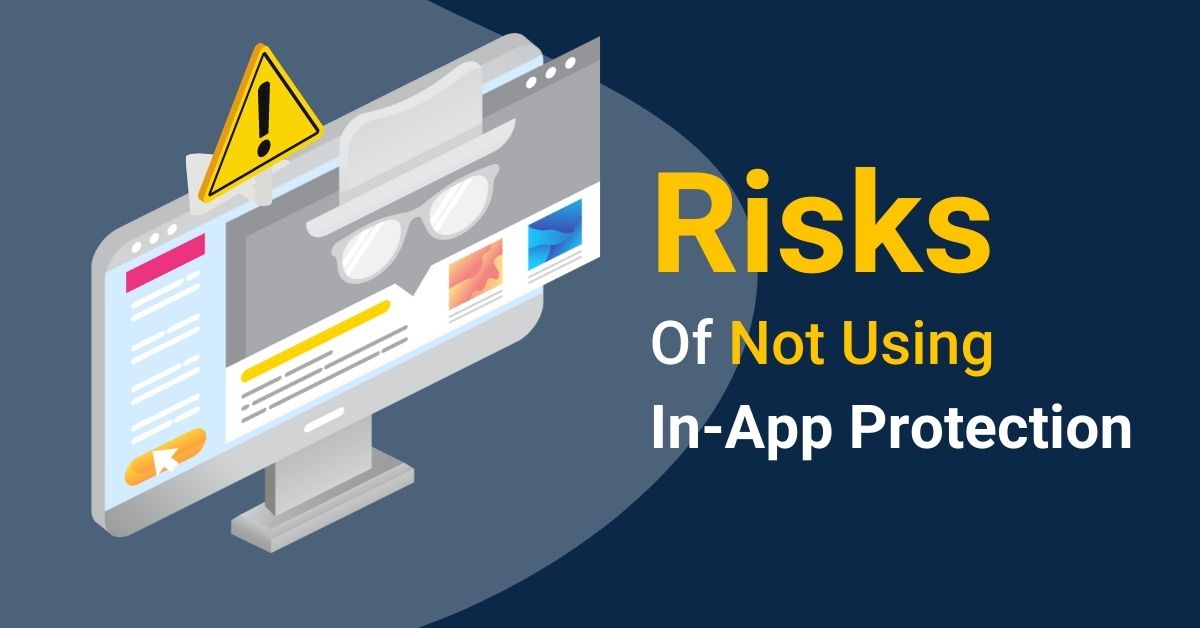
Businesses of all types rely on applications, in fact they have become the central way the majority of us live our lives. From online banking, to filing your taxes on your phone or attending a virtual doctor’s appointment. Every element of our lives is navigated by a mobile or desktop application.
It’s not just users, companies are also reliant on applications. Using them to manage central operations, production, fulfillment and marketing. Organizations use applications in a myriad of fashions, by the same token every application adds further risk.
Businesses are shifting online to meet emerging needs but are also being faced by an emerging risk landscape with expanding risk across the Internet of Things. Application protection as such is an essential component to protect every element of your organization. IP Theft, application attacks or data leakage can all have material impacts on the organization, reputation and adherence to regulations. The impact of failures in this regard can be expensive. In 2018 it was estimated that IP targeted cyber crime accounted for $50 to $60 Billion of global losses. The payment industry has established fines of up to $500K per incident for security breaches according to UCSC failure to comply for companies is clearly expensive.
With that noted, it is important to examine the tacit consequences and long term impacts of not using in app protection:
Unauthorized Access is a critical risk for the majority of industries that handle private information, specifically personally identifiable information. If a person who is not allowed to make use of your application starts making use of it then there are more chances that the individual will commit fraud. It is hard to predict the behavior or intentions of anyone but it is essential to take every proactive step to avoid unauthorized access.

Vulnerabilities like Broken Authentication expose your applications to hackers gaining access and then committing fraud. Session management or credential management issues can easily enable hackers to gain access and commit fraud against your application. The worst part… these attacks often go unnoticed without in app protection or runtime checks. As we know the cost of breaches only goes up over time: A breach identified in 100 days costs approximately $5.99 Million, while a breach that takes longer can cost upwards of $8.7 Million.
Hackers can also use access to your application to expose sensitive datam putting end users at risk of losing their personal data or facing the downstream risks of identity theft, data leaking and doxing. All of which present a tangible threat and will likely result in financial obligations for the organization, due to negligence and failure to protect their customers. It can also be as simple as privilege escalation, a user enabling additional privileges allowing them to control aspects of the application that should not be externally leveraged. A recent example is the 2017 Accenture attack.
There is a reason that the top software companies like 1Password, Google & Adobe pay over $100,000 for researchers that identify vulnerabilities within their toolsets. The bug bounty is in fact a rapidly growing industry and entire organizations exist around identifying these vulnerabilities. A recent research report from IBM identified that finance security professionals detect just 56% of incoming attacks, managing 53% of these attacks and only preventing 31% of attacks completely. Organizations don’t have a comprehensive ability to mitigate risk, even if you are using SAST / DAST / IAST and penetration testing risks can still slip through the gaps.

The average cost of vulnerabilities for all industries is approximately $13 Million. This combines the cost of paying for fines corresponding to regulation violations, the cost of remediating the risky vulnerabilities, the expense to prevent data from being leaked and the potential cost of IP being leaked. Then let’s lay on the cost of reputation damage, Security Magazine reports that 80% of customers will not continue to leverage a bank’s services if their information is compromised… this is probably justified. Organizations are equally skeptical of services following attacks and they will follow the example of customers. But, reputation isn’t singular, organizations can also face the impact of loss of goodwill. It will impact your brand image and can prevent customers from even acknowledging the validity of your organization.
Intellectual property loss is likely the most pernicious risk of not using In App protection. It is often the case that applications include some form of intellectual property which could encourage competitors to copy, steal or leverage in their own applications.

Reverse engineering is a significant issue for organizations, by enabling capabilities on the client side, users and hackers can gain access to and expose more functionality through the server siege of the application. Not obfuscating code enables these users to easily interpret the intended functionality of the application and identify how to replicate this operability. One recent example is American Superconductor, a U.S based provider of clean energy solutions. In 2011 their largest customer Sinovel ignored their contract and refused to pay millions of dollars owed. The company then obtained the source code for all of the electronic components and were able to install a pirated version into their wind turbines. The violation of the IP rights and loss of revenue can incur as much as $200 Million a year in losses. Without possibility for legal resources or ability to prevent continued leverage.
IP trade theft costs organizations as much as 3% of Annual U.S. GDP.
Obfuscation, PreEmptive provides a layered approach that clings to the deployed application and helps to ensure any unidentified vulnerabilities that are hidden. Reducing the likelihood of hackers identifying and leveraging them. Obfuscation also protects your IP concealing the framework and structure of your application from corporate spying and ensuring your competitors can’t repurpose your sweat equity.
For more information about in-app security, visit our products page and start protecting your apps today!